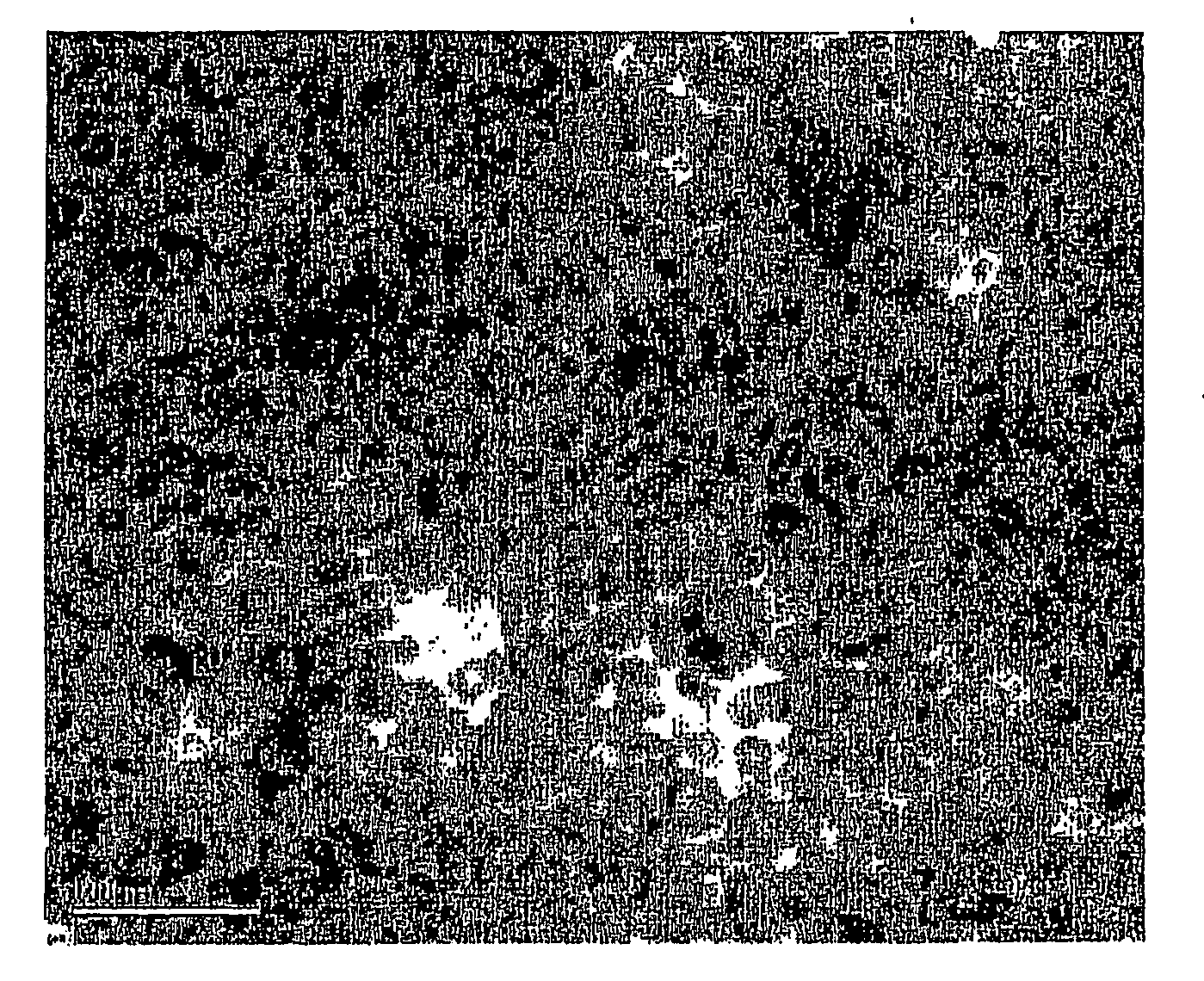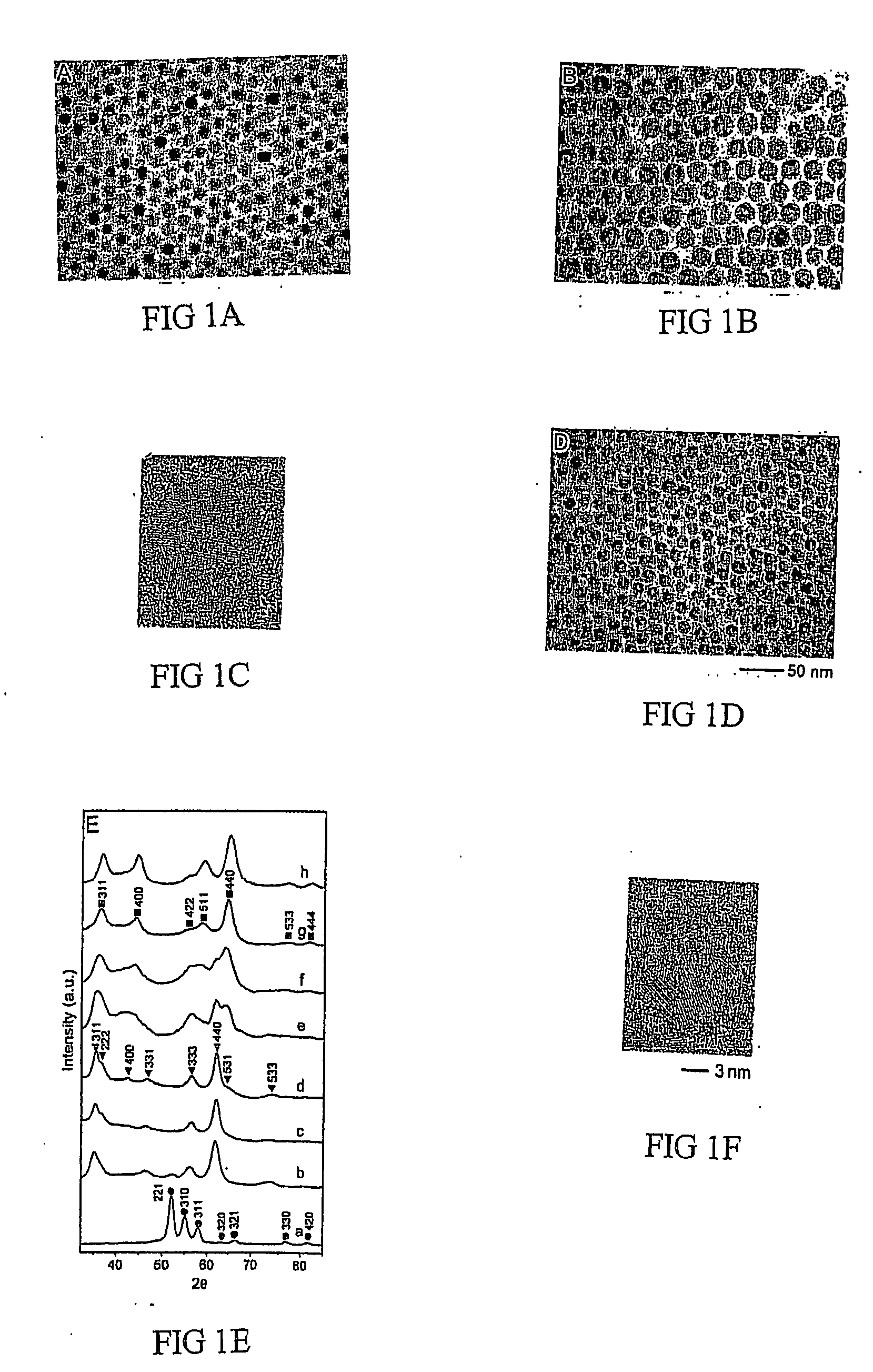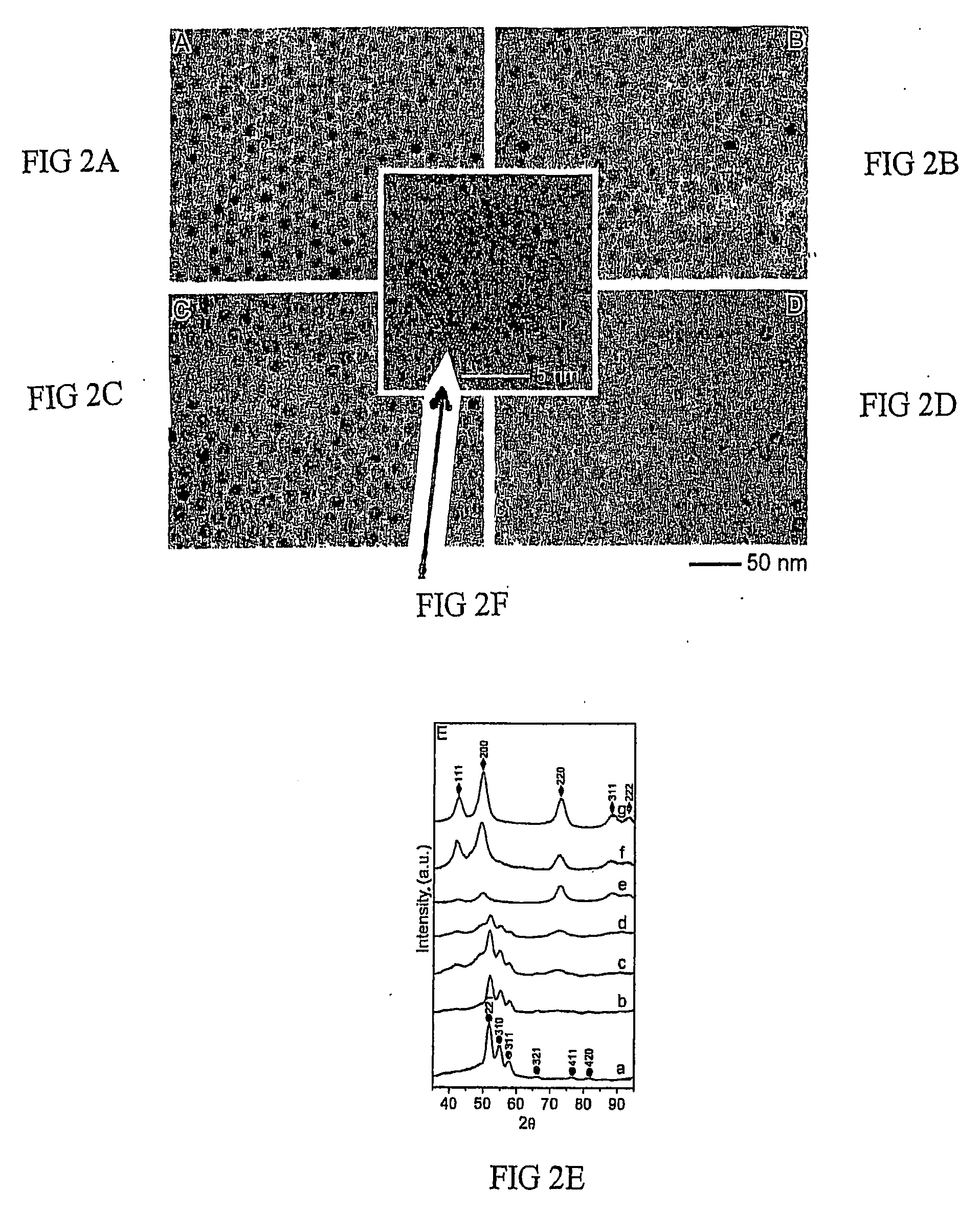Hollow nanocrystals and method of making
a nanocrystal and crystal technology, applied in the field of hollow nanocrystals and method of making, can solve the problems of uneven geometry and distribution of pores
- Summary
- Abstract
- Description
- Claims
- Application Information
AI Technical Summary
Problems solved by technology
Method used
Image
Examples
example 1
Synthesis of Cobalt Pentlandite Hollow Nanocrystals (CO9S8)
[0047]0.54 g of CO2(CO)8 in 3 ml of o-dichlorobenzene was rapidly injected into a hot solution of 0.1 ml of oleic acid and 0.1 g of trioctylphosphine oxide in 15 ml of o-dichlorobenzene at 455 K. The decomposition of CO2(CO)8 leads to the formation of cobalt nanocrystals having sizes approximately 10 nm. After approximately one minute, 0.085 g sulfur solution in 5 ml o-dichlorobenzene was injected into the hot cobalt nanocrystal solution. The reaction was stopped after about two minutes by cooling the system to room temperature. TEM measurement shows the hollow morphology of the nanocrystals and XRD analysis proves the material to be Co9S8. The size was about 15 nm.
example 2
Synthesis of Linnaeite (CO3S4) Hollow Nanocrystals
[0048]Co nanocrystals were prepared as described in Example 1. After 1 min, 0.128 g sulfur solution in 5 ml o-dichlorobenzene was injected into the hot cobalt nanocrystal solution. The reaction was stopped after about two minutes by cooling the system to room temperature. TEM measurement shows the hollow morphology of the nanocrystals and XRD analysis proves the material to be CO3S4. The size was about 15 nm.
example 3
Synthesis of Cobalt Oxide (CoO) Hollow Nanocrystals
[0049]Co nanocrystals were prepared as described in Example 1. After 1 min, a stream of O2 / Ar (1:4 in volume ratio, 120 ml / min) mixture was blown through a cobalt colloidal solution at 455 K for 210 minutes. The reaction is stopped by cooling the system to room temperature. TEM measurement shows the hollow morphology of the nanocrystals and XRD analysis proves the material to be CoO. The size was about 15 nm.
PUM
| Property | Measurement | Unit |
|---|---|---|
| thickness | aaaaa | aaaaa |
| thickness | aaaaa | aaaaa |
| thickness | aaaaa | aaaaa |
Abstract
Description
Claims
Application Information
 Login to View More
Login to View More - R&D
- Intellectual Property
- Life Sciences
- Materials
- Tech Scout
- Unparalleled Data Quality
- Higher Quality Content
- 60% Fewer Hallucinations
Browse by: Latest US Patents, China's latest patents, Technical Efficacy Thesaurus, Application Domain, Technology Topic, Popular Technical Reports.
© 2025 PatSnap. All rights reserved.Legal|Privacy policy|Modern Slavery Act Transparency Statement|Sitemap|About US| Contact US: help@patsnap.com



